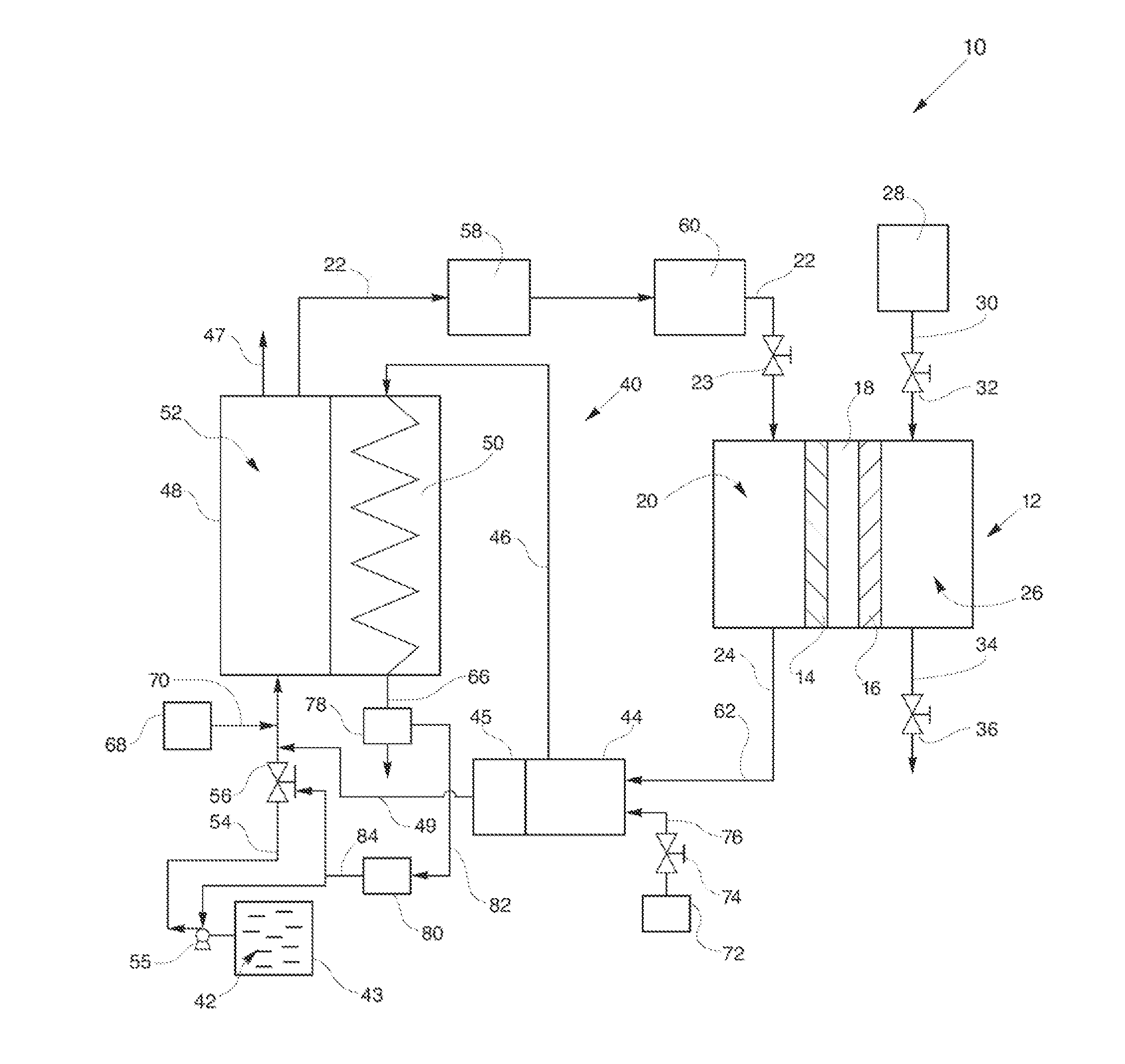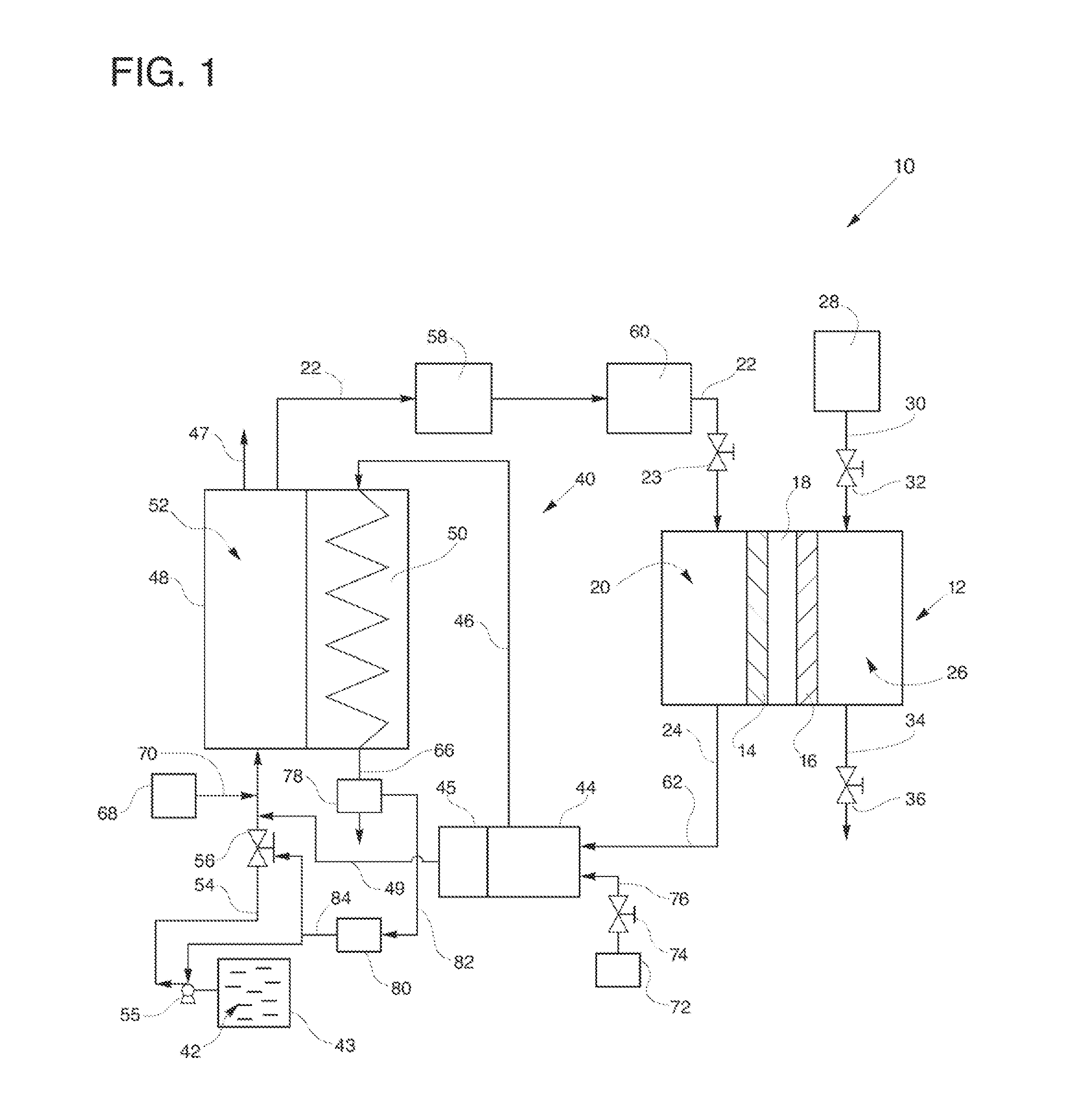Anode utilization control system for a fuel cell power plant
a fuel cell power plant and utilization control technology, applied in the direction of emergency supply, electrical generators, sustainable buildings, etc., can solve the problems of insufficient basic control, insufficient basic control, and insufficient basic control, so as to reduce or eliminate the need for time-consuming and expensive factory-tuning, and facilitate access. , the effect of rapid indication of changes in anode utilization
- Summary
- Abstract
- Description
- Claims
- Application Information
AI Technical Summary
Benefits of technology
Problems solved by technology
Method used
Image
Examples
Embodiment Construction
[0026]Referring to the drawings in detail, an anode utilization system for a fuel cell power plant is shown in FIG. 1 and is generally designated by the reference numeral 10. The system or power plant 10 includes at least one fuel cell 12 including an anode catalyst 14 and a cathode catalyst 16 secured to opposed sides of an electrolyte 18, an anode flow field 20 defined in fluid communication with the anode catalyst 14 and with a fuel inlet line 22 for directing flow of a hydrogen-rich fuel stream from the fuel inlet line 22 and through the anode flow field 20, adjacent the anode catalyst 14 and out of the anode flow field 20 through an anode exhaust 24 and anode exhaust valve 25. The fuel inlet line 22 includes a fuel inlet valve 23 for selectively controlling flow of the fuel into the anode flow field 20.
[0027]The fuel cell 12 also includes a cathode flow field 26 defined in fluid communication with the cathode catalyst 16 and with an oxidant source 28 for directing flow of an ox...
PUM
| Property | Measurement | Unit |
|---|---|---|
| temperatures | aaaaa | aaaaa |
| electrical current | aaaaa | aaaaa |
| heat | aaaaa | aaaaa |
Abstract
Description
Claims
Application Information
 Login to View More
Login to View More - R&D
- Intellectual Property
- Life Sciences
- Materials
- Tech Scout
- Unparalleled Data Quality
- Higher Quality Content
- 60% Fewer Hallucinations
Browse by: Latest US Patents, China's latest patents, Technical Efficacy Thesaurus, Application Domain, Technology Topic, Popular Technical Reports.
© 2025 PatSnap. All rights reserved.Legal|Privacy policy|Modern Slavery Act Transparency Statement|Sitemap|About US| Contact US: help@patsnap.com


